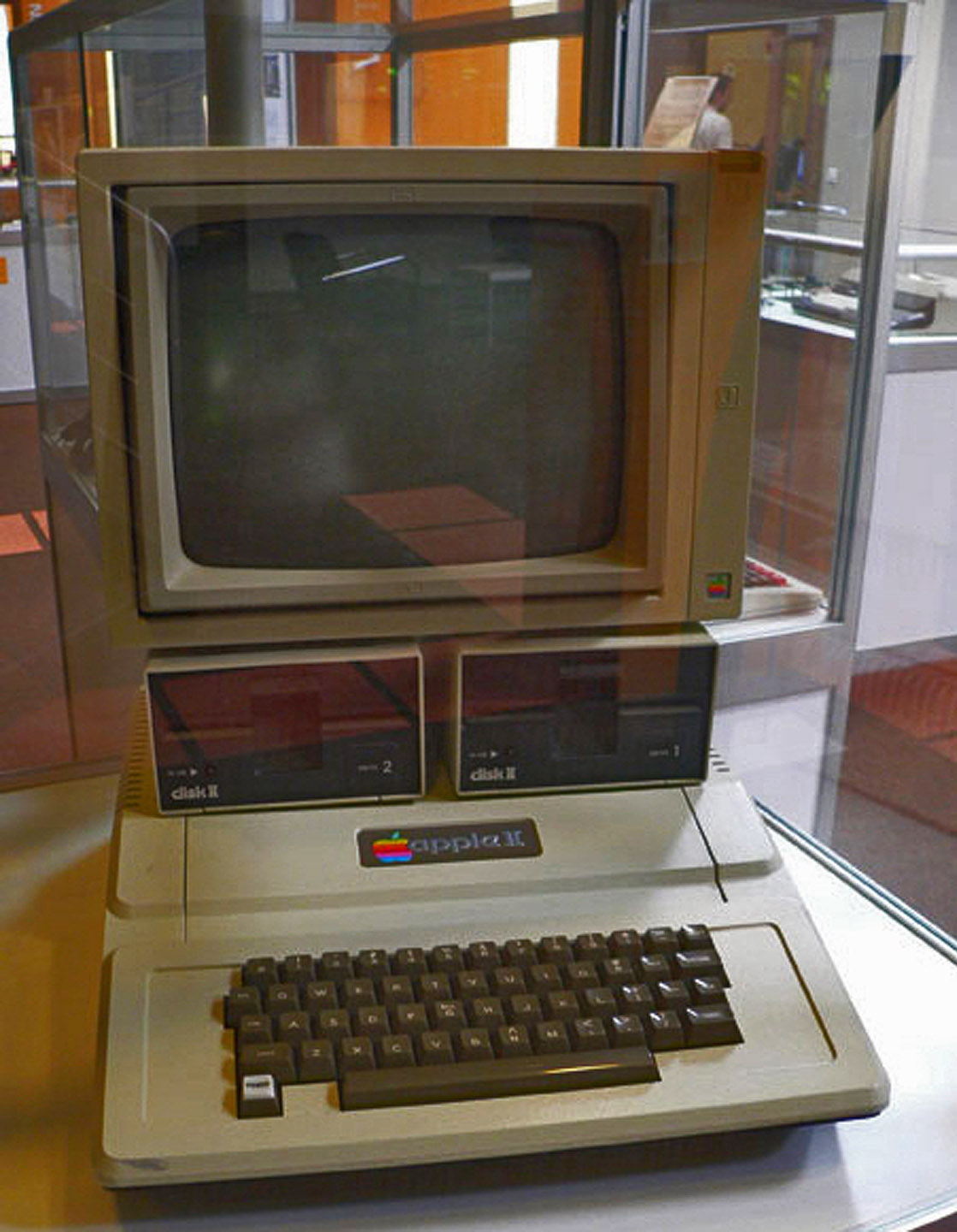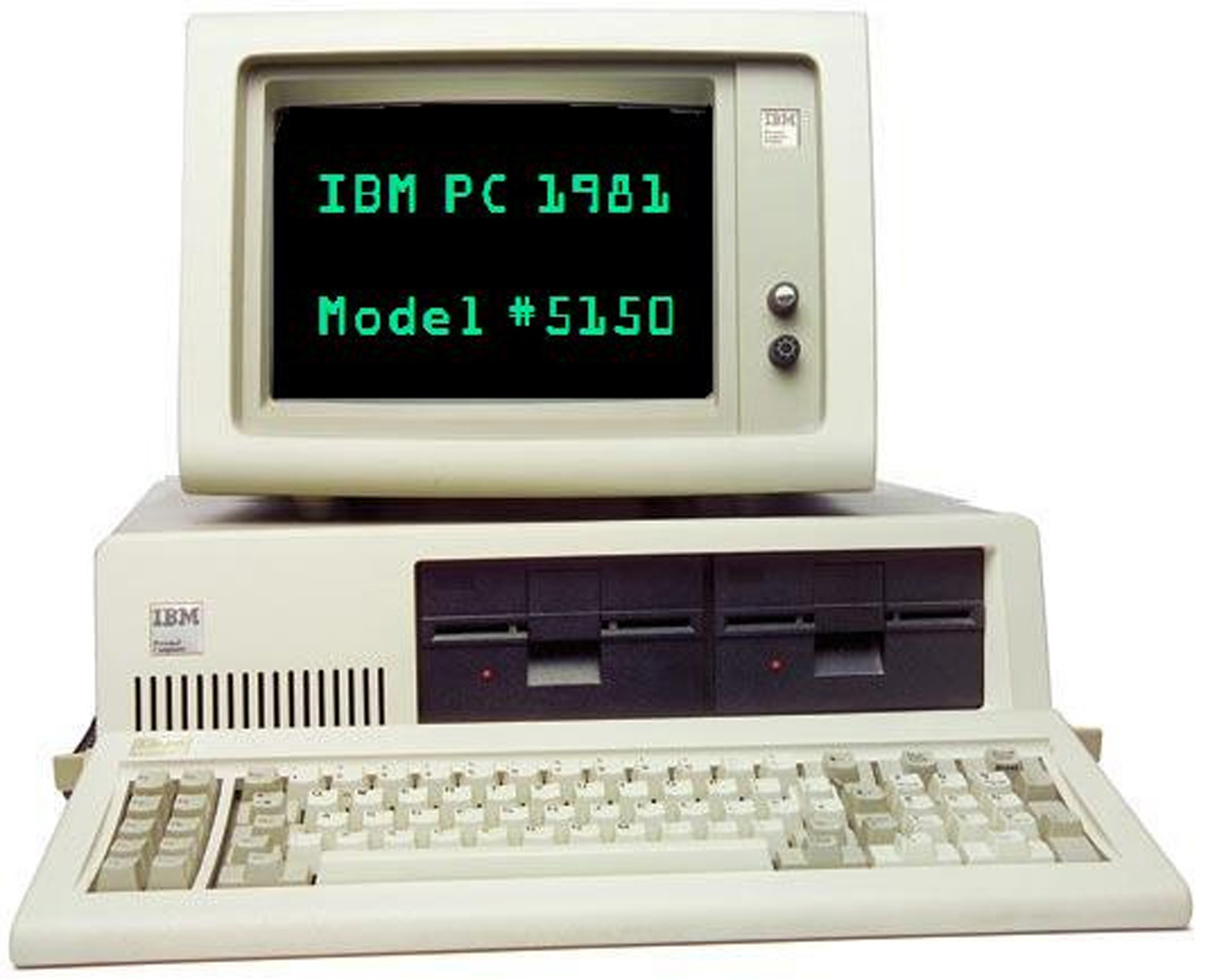
The art of religion news in the PC age, 1976-1989
A barefooted Steve Jobs kicked back on the grass to share “his vision of the seamless integration of design and engineering.” The circle of people around him were raptly rooted on the ground. The young computer entrepreneur was already a visionary presence making himself felt as if one of Star Trek’s “reality distortion fields.” Listeners joked how he had defied common sense to found Apple on April Fools Day in 1976. Many were already trying out the Apple 2 that in 1977 put all of the computer parts into one box, easy to use even by a Bay Area hippie.
Jobs and his friend Paul Wozniak were circumnavigating the inflexibility of distributed computing controlled by the centralized staff of the mainframe computer. Nor were the engineers of the mainframe world particularly interested, as a whole, in aesthetic complexity and innovation.
In 1978 people in northern California digital technology felt that they were marrying the computer to the Age of Aquarius. Scorned by the East Coast as “hippies,” these computer engineers and designers were brainstorming on how to bust out of the grim industrialist thinking and designing by the establishment. Designers of tech were launching a movement to recast industrial design into something more like art.
Fired up by the Small is Beautiful guru E.F. Schumaker and the life-style of the Whole Earth catalogue, Jobs and others at the Stanford Design Conference wanted to create enterprises and designs that nourished humanity and promoted innovative alternatives to industrialism. A similar spirit motivated the locals who hosted in San Francisco the annual convention of the Industrial Design Society of America. They filled the program with ideas that left some convention goers ready to flee what they saw as hippieville. The Silicon Valley group named the convention, “Thrival: Beyond Survival” (some remember a more dynamic forward slash, “Thrival/Beyond Survival”). Yoga and meditation opened and closed the day. James Ferris designed a conference poster with the fragile, glowing earth protected by two outstretched hands. Ferris soon became the Creative Services Master (AKA “Art God”) for Apple Computer.
IBM entered the personal computer market in August 1981 with the IBM PC. In the same year the first version of Microsoft Word was developed. In 1982 ESRI introduced the software ARC/INFO,the first commercially available mapping software.
The personal computers meant that the individual person or small news enterprises could avail themselves of the computing power independent of big media organizations or big computer centers. Eventually, the result was that small news start-ups could craft and control the look and feel of their narratives, designs and illustrations.
1983-1989 The digital age for news reporting emerges
As multiple advances in equipment, networks and software were made, the trend became an effort to discover how to combine narrative media, statistics, photos, audio, video, etc. quickly into finished products. The age of multi-media reporting had arrived. In 1983 Ithiel de la Pool’s Technologies of Freedom rabbinically read the code of the present to forecast that “a convergence of modes is blurring the lines between media.” He predicted a prolonged disruption of the old news testament.

“Ithiel de Sola Pool pioneered the social science study of the relation of technologies and freedom. He was the son of the rabbi for Sephardic Congregation Shearith Israel in New York City.” 1983 by Richard Rodstein – Own work. Licensed under CC BY-SA 3.0 via Commons.
The traditional media companies hastened to catch up with the new convergence. In 1983 the newspaper chain Knight-Ridder launched Viewtron, one of the first systems designed to send electronic news directly to readers, giving customers access to stories before the paper hit their doorstep the next morning. But the costs were too high, the technology insufficient, and the effort failed to grasp that the future lay in a convergence of text and other types of media. The effort was a two-dimensional attempt to reproduce the features of print media into what was becoming a four-dimensional multi-media world.
Meanwhile, Apple computer’s leaders were ushering the industry toward a new aesthetically rich era. Jobs had heard that the scientists and engineers at Xerox’s PARC were developing the wave of the future that its corporate parents on the East Coast didn’t fully appreciate. Xerox put a price-tag on how willing they were to let their West Coast innovations flow to someone else. In return for the right to buy US$1,000,000 of pre-IPO stock, Xerox granted Apple Computer three days access to its PARC facilities in Palo Alto. Apple jumped at the chance to see these modern John the Baptists hurling revelatory lightening in the wilderness. What Jobs and his team gained was not high priced tools for professionals, which is what Xerox thought it was giving, but an industry for the masses. As PARC demonstrated its personal computer equipped with intuitive word processing software, cutting-and-pasting, email, windows, icons, menus, and a mind-blowing thing called a mouse, Jobs walked back and forth becoming more and more agitated. According to PARC engineer Larry Tesler (who graduated from Bronx High School of Science), Jobs suddenly jumped up and shouted, ‘Why aren’t you doing anything with this? This is the greatest thing. This is revolutionary!’ ” Soon afterwards, Jobs invited the best talent, including Tesler, to join Apple. The Apple contingent also came away with the new ideas that would complete the foundation for its first computer, the Apple Lisa, using a user-friendly graphics interface with windows, icons, and menus. This soon led to the Macintosh 128k.
Malcolm Gladwell also reached for a Biblical story to grasp the momentous nature of the visit and its outcome. He wrote that Silicon Valley came to believe that “Jobs is the Biblical Jacob and Xerox is Esau, squandering his birthright for a pittance.” Maybe, more accurately, PARC was a heaven for engineers and scientists to develop technology usable in the laboratory while Apple was the spreading of the gospel of the digital revolution among the masses. In fact the promoters for Apple were called “evangelists.”
The new image friendly Macintosh was announced dramatically by a single national broadcast of the now famous US$1.5 million television commercial, “1984” during Super Bowel XVIII on January 22, 1984. It was directed by Ridley Scott, late of “Blade Runner, (his current movie “The Martian” was released on October 2, 2015). The ad has Big Brother declaring the purity of non-contradictory thoughts and promised that “our enemies” will be buried “with their own confusion.” Apple’s slogan was introduced as “Think Different,” a clear counterpoint to IBM’s “Think.”
However, the IBM PC attracted more software producers. In 1984 the foundation was laid for data-driven journalism with the introduction of Statistical Package for the Social Sciences (SPSS), the first advanced statistical software that could run on a PC. This meant that any individual or small news organization could have the power of processing and analyzing data that had previously be reserved to mainframe computers.
Another outsider, Rupert Murdoch, was also making his entrance into news media. He would interject a tabloid aesthetic into television news. In 1985 he established his United States citizenship which would allow him to own television stations. After a number of acquisitions, he founded Fox Broadcasting Company in 1986.
Other technologies were developed to use the processing power of the individual computer to process maps, photos and art and display them on the internet. Students at Renssalaer Polytechnic University developed a way of planning and displaying bus routes for the local schools in Rochester, New York. From this seemingly unlikely source came the powerful mapping software MapInfo in 1986. In the 1980s Quark and Adobe created breakthrough software programs for creating designs and processing photos. In 1988 the brothers John and Thomas Knoll published Photoshop, which gained wider circulation in 1990 after a deal with Adobe.
Then, the next year Tim Berners-Lee established the protocols for the World Wide Web which ushered in a real revolution in the news media in the early- to mid-1990s. He uploaded the first picture onto the web, a placard of the comedy band Les Horrible Cernettes.
Several news media took advantage of the new convergences to launch their own websites. These included CNN, The Chicago Tribune and, surprisingly, the News & Observer in Raleigh, N.C. Outlets that historically catered to a broad range of topics in print began focusing via the Web on more targeted subjects.
“[The News & Observer’s] Nando.net got to the party early, particularly for sports news,” says Owen Youngman, Knight Professor of Digital Media Strategy at Northwestern University. He pointed out that for the first time sports fans were able to get all their scores that evening rather than having to wait for the morning paper. At this point the effects on religion news and its design were still minimal.
The Berlin Wall came down, and in the next decade the browser started erasing the limitations on global awareness.

Section of Berlin Wall on display at Newseum, Washington DC. Photo: Tony Carnes/A Journey through NYC religions







Leave a Reply